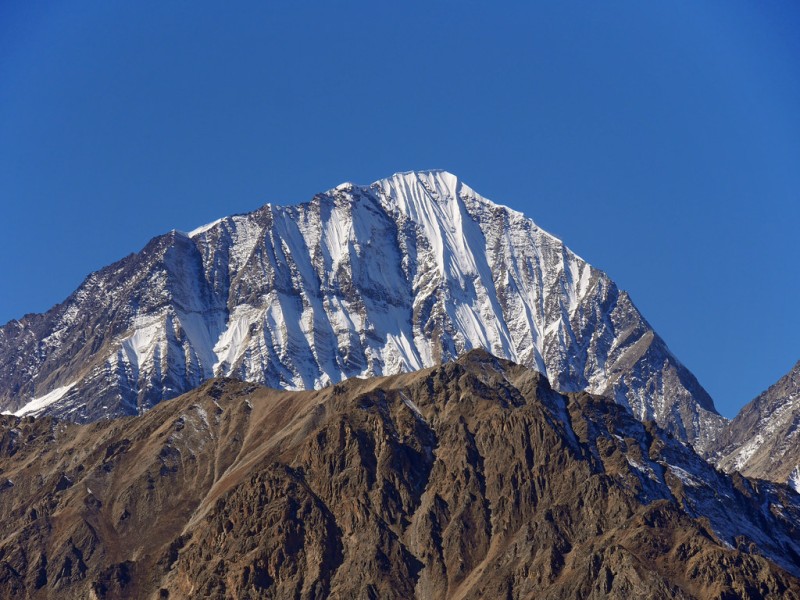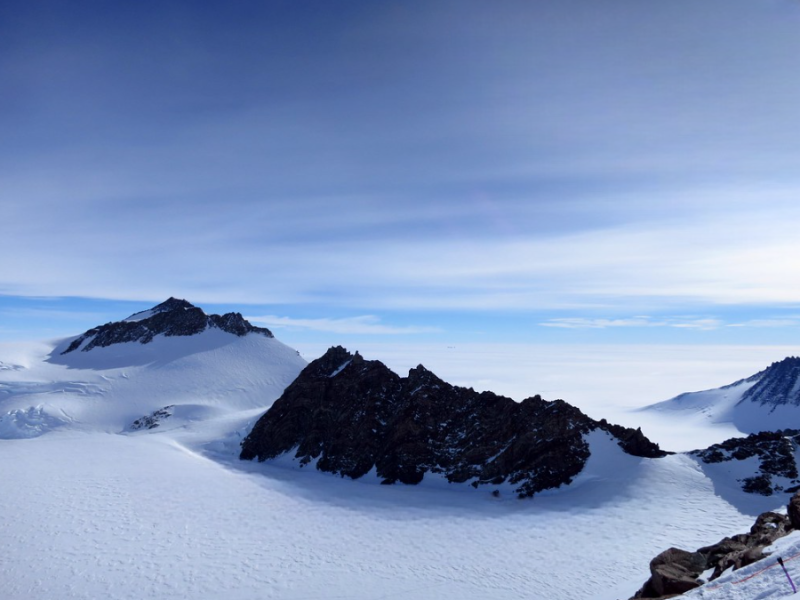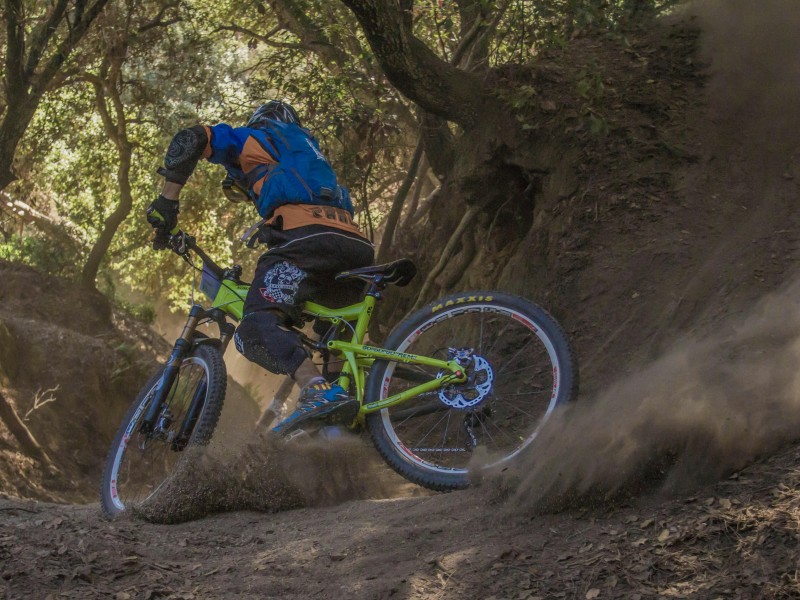Climbing Equipment:
● ICE-AXE
● CRAMPONS
● CARABINER SYSTEM
● ALPINE CLIMBING HARNESS
● BELAY DEVICE
● TREKKING POLES
● ASCENDER
FOOTWEAR:
● HIGH-ALTITUDE ALL-IN-ONE BOOT
● CAMP BOOTS
● INSULATED CAMP BOOTIES
● LIGHT HIKING BOOTS OR TREKKING SHOES
● WOOL OR SYNTHETIC SOCKS
● LINER SOCKS
TECHNICAL CLOTHING:
● BASELAYERS - TOP & BOTTOM
● HEAVY BASELAYER BOTTOMS
● MIDLAYER TOP
● TREKKING PANTS
● SOFTSHELL PANTS
● SOFTSHELL JACKET
● HARDSHELL PANTS
● HARDSHELL JACKET
● INSULATED SYNTHETIC HOODED JACKET
● INSULATED DOWN PARKA
● EXPEDITION DOWN PARKA
● EXPEDITION DOWN PANTS
● DOWN SUIT
● INSULATED SYNTHETIC PANTS
HANDWEAR:
● LIGHTWEIGHT LINER GLOVES
● SOFTSHELL GLOVES
● INSULATED SHELL GLOVES
● EXPEDITION MITTENS
HEADWEAR:
● CLIMBING HELMET
● SUN HAT
● BALACLAVA SYSTEM
● BUFF
● WOOL/SYNTHETIC SKI HAT
● FACEMASK
● GLACIER GLASSES
● SKI GOGGLES
● NOSE GUARD
● HEADLAMP
PERSONAL EQUIPMENT:
● DOWN SLEEPING BAG (-20F)
● DOWN SLEEPING BAG (-40 )
● 55-LITER CLIMBING PACK
● SMALL PACK 30-35 LITTER
● INFLATABLE SLEEPING PAD
● FOAM PAD
● PEE FUNNEL (FOR WOMEN)
● WATER BOTTLE PARKAS
● WATER BOTTLE
● THERMOS
● LARGE DUFFEL BAGS
● TOILETRY BAG
● WATER PURIFICATION TOOLS
● SUN CREAM
● LIPS BALM
● RUNNING SHOES
● FIRST AID KIT (Personal)
● HAND TOE Warmer
● MUG
● SPOON
● BOWL
● KNIFE
General Medications – Diamox- This is a high-altitude medication that can be used as a prophylactic (preventative) solution to acute mountain sickness (AMS) or altitude sickness. It does not cure AMS and should never be used as a substitute for descent (which is the only real solution to AMS). It can however help prevent the onset of AMS and is commonly used by high altitude trekkers / Mountain Climbers. Please seek proper medical advice before taking Diamox. Taking paracetamol for headaches (which are a common altitude sickness symptom) and Imodium for diarrhea.
Top quality mountaineering clothing and equipment is an investment that will see you through years of adventures. It is wise to choose carefully, and not to skimp on quality. The companies and products you see listed below can serve as starting points of reference for you. Take this list to your local outdoor specialty shop.
Footwear:
● Running shoes: For travel and easy walking
● Sport sandal: That can be worn with socks. (Teva, Chaco)
● Lightweight hiking boots: Leather or fabric/leather with a sturdy midsole and a Vibram sole.
● Climbing boots: Plastic double boots. Alveolite liners for warmth are recommended. (Vasque, Koflach, Scarpa)
● Booties: Synthetic or down insulation. Any brand with thick foam soles.
● Lightweight socks: Three to four pairs synthetic/wool blend (Bridgedale, Patagonia, Smartwool)
● Mid-weight socks: Three to four pairs synthetic/wool blend (Bridgedale, Patagonia, Smartwool)
Clothing:
● Lightweight long underwear top: (Patagonia Capilene, REI, Mountain Equipment Co-op)
● Mid-weight long underwear tops: Zip-T neck design is good. Light colors are better for tops because they are cooler when hiking in direct sunlight and just as warm as dark colors when worn underneath other layers. (Patagonia, North Face, Mountain Hardwear)
● Lightweight long underwear bottoms: (Patagonia Capilene, REI, Mountain Equipment Co-op)
● Mid-weight underwear bottoms: Dark colors are preferable because they do not show dirt. (Patagonia Capilene, REI, Mountain Equipment Co-op)
● Briefs: Four pairs synthetic or cotton. Running shorts also work well for underwear. (Patagonia Capilene)
● Short-sleeved shirts: Two synthetic; most nylon running shorts or athletic shirts work. (North Face, Patagonia, or any brand of PowerDry)
● Jacket, synthetic or fleece: Synthetic jackets or pullovers are a great alternative to fleece because they are lighter and more compressible. Primaloft type fill or Polartec 100 or 200 fleece is recommended. (Wild Things Primaloft, Patagonia Puff Jacket)
● Synthetic insulated pants: Primaloft or Polarguard 3D. Full side zips are recommended. Mountain Hardwear Chugach 3D pants are an example. An acceptable alternative are fleece pants like Polartec 100 or 200, but they are bulky, heavier and less versatile.
● Down insulated jacket: Expedition weight with a hood. (Marmot, North Face, Mountain Hardwear)
● Waterproof breathable jacket & pants: Jacket must have a hood, pants must have full-length side zips. (Arc'Teryx, Marmot, Mountain Equipment Co-op)
Head & Hand Gear:
● Liner gloves: Lightweight synthetic (Patagonia Capilene or any brand of PowerStretch)
● Windstopper fleece gloves: (any brand of Windstopper fleece)
● Gore-Tex Mittens w/ pile liners: Expedition weight liner for the first pair, second pair should have a light weight pile liner. (Outdoor Research)
● Bandana: Two to Three traditional cotton styles.
● Sun hat: Any lightweight hat with a good brim or visor.
● Wool or fleece hat: Any brand of warm hat that can go over ears.
● Balaclava: At least one. Some people layer a very thin Capilene balaclava under a thicker fleece one.
Accessories:
● Sunglasses 1: For high altitude. 1 pair of high quality 100%UV and 100%IR with a minimum of 80% light reduction, side shields such as those found on “glacier glasses” are not recommended, but size and shape of lens should offer maximum protection from bright light on snow.
● Sunglasses 2: One pair high quality 100%UV and 100%IR, for lower elevations, also as a backup. It is important to have a spare pair of sunglasses.
● Ski goggles: (Bolle, Smith)
● Gaiters w/reinforced lowers: Short, simple gaiters are best, such as Outdoor Research Rocky Mountain Low Gaiters.
● Headlamp w/spare bulb: (Petzl, Black Diamond)
● Spare batteries: For headlamp and other gadgets you bring.
Climbing Equipment:
● Ice Axe: General mountaineering Axe. 60 cm length is good for most people but it does depend on your height. Shaft should be straight, not curved. You will need a leash to attach your Axe to your harness as well as a “wrist loop”. Bring a commercial leash designed for glacier travel or 6 ft of 9 / 16 inch webbing and your guide will help you construct one. (Grivel, Black Diamond)
● Crampons: 12 point step-in (Grivel, Black Diamond)
● Harness: Alpine style, you should not have to step through leg loops to put it on and off. It should be lightweight and fully adjustable. (Black Diamond)
● Carabiners: Two large locking “pear” shaped, 6 regular mountaineering carabiners (avoid small gate specialized sport climbing ‘biners) (Black Diamond, Petzl, Clog)
● Prussik cord: 20 feet of 6mm perlon which is also known as a static accessory cord.(don’t cut it, bring in one piece)
● Ascenders: One left or right hand orientation, does not matter (Petzl)
● Rappel device: Figure 8, ATC or Trango Pyramid
Camping Gear:
● Backpack: 5000 cubic inches (80 liters) or more, internal frame. Top opening mountaineer’s rucksack style is best. Avoid large zipper openings and excessive outside pockets. Larger packs are better than smaller, because they are easier to pack with cold hands and they distribute loads more effectively. (Gregory, North Face, Dana, Arc’Teryx)
● Small day pack: Optional, should be small and simple, can double as a stuff sack or organizer, useful for airline carry-on and for while touring in cities. (Black Diamond, Lowe)
● Pack cover: Recommended. To protect your gear on rainy or snowy days (REI, MEC, Osprey, Gregory).
● Sleeping bag: Expedition quality rated to at least minus 20F (-25C) ((Marmot, North Face)
● Sleeping pad: Inflating, full-length (Therm-a-rest)
● Foam pad: (Ridgerest)
● Water bottles: Two 1-liter, leak-proof wide-mouth. (Nalgene, Lexan)
● Lightweight steel thermal bottle: (Zojirushi, Nissan, Outdoor Research)
● Pee bottle: One 1-liter, leak-proof wide-mouth (Nalgene, Lexan)
● Pee funnel for women: (Freshette)
● Pack towel: Small or medium size. Do not bring “terry cloth”, bandanas work in a pinch. (PackTowl)
● Trekking poles: Make sure they are adjustable and can extend or shorten. (Leki, Black Diamond)
● Swiss army knife: Remember not to leave in carry-on bags for any international or domestic flight.
● Large mug, plastic bowl, Lexan fork and spoon: lightweight metal is ok. (MSR)
Medical & Personal:
● Sunscreen: SPF 30 or higher, non-oily (Dermatone or Terrapin)
● Lipscreen: SPF 30 or higher, any brand
● Toiletry kit: Toothbrush, toothpaste, skin lotion, alcohol-based hand sanitizer, soap, comb/brush, shave kit, (bring travel size bottles to keep your kit small).
● First-aid kit: Ibuprofen/Aspirin, assorted band-aids, moleskin, Neosporin-type suave, small gauze pad, roll of adhesive tape, tweezers, safety pins. Include any prescription travel meds that might be prescribed by your doctor (antibiotics, Diamox, sleep aids).
● Zip-loc bags: Always useful
● Water purification tablets: Such as Potable Aqua brand iodine tablets. You will be given plenty of purified water during your trek and climb, but one bottle of backup purification tablets is always a good idea for your travels.
Travel Items:
● Expedition duffel bag: 8000+ cubic inches (130+ liter). Buy something well built with large, strong zippers. These bags are strapped to Yaks! (North Face, Patagonia “Black Hole”, Wild Things “Burro Bag”)
● Travel bags: Extra duffel bags are useful for storing things in Kathmandu, in Namche and at Base Camp. Most soft sided “carry-on’ type bags work well. (Camp Trails “Packable”, Wild Things “carry-on”) You might also use extra large stuff sacks. Plan to fly to Nepal with two large duffels, and some smaller bags for organizing inside.
● Nylon stuff sacks: Several different sizes, light colors preferable for labeling. (Outdoor Research)
● Long sleeve shirt: Cotton, comfortable
● Hiking shorts and/or skirt/sarong: 1 pair (any brand of Supplex short)
● Lightweight pants: One pair (any brand Supplex or “stretch woven” pant)
● City clothes for Kathmandu and Bangkok: Casual, one or two changes. Kathmandu is warm in the daytime, cool in the evenings.
● Small padlocks: for locking duffle bag(s)
● Book(s)
● Journal
● Camera / video camera w/ extra batteries: We suggest plenty of non-rechargeable power, such as lithium batteries. Cold weather is hard on ni-cad and regular alkaline batteries and solar recharging is not always an option.
● Film: Bring plenty, it is expensive in Nepal. Be sure to keep in your carry-on luggage, in clear zip- lock bags so that it can be inspected at airports. If you bring a digital camera, do not forget to bring extra media storage cards.
Copyright ©2025 All rights reserved | Xtreme Climbers Treks and Expedition - Your Adventure Partner in Nepal






























































































































